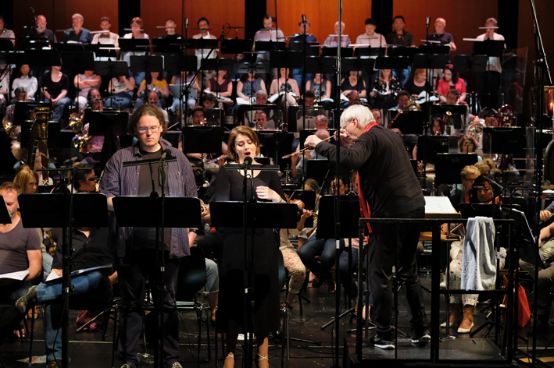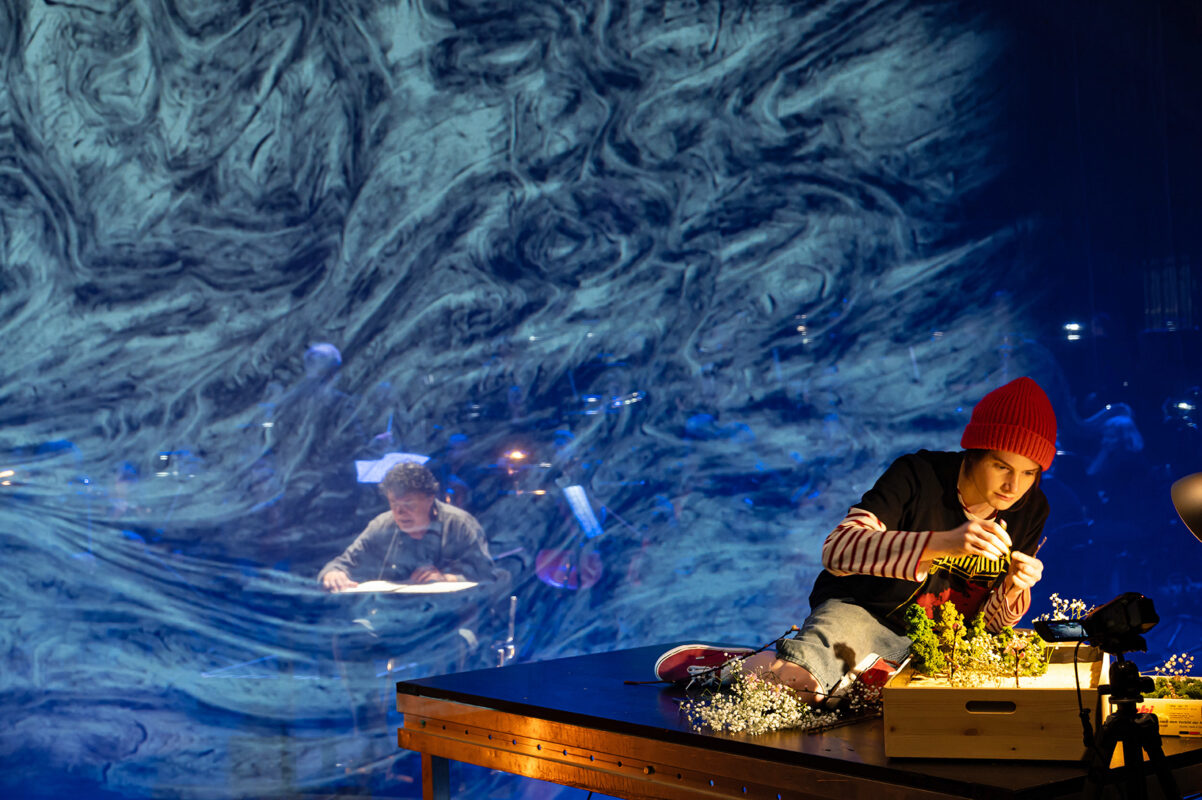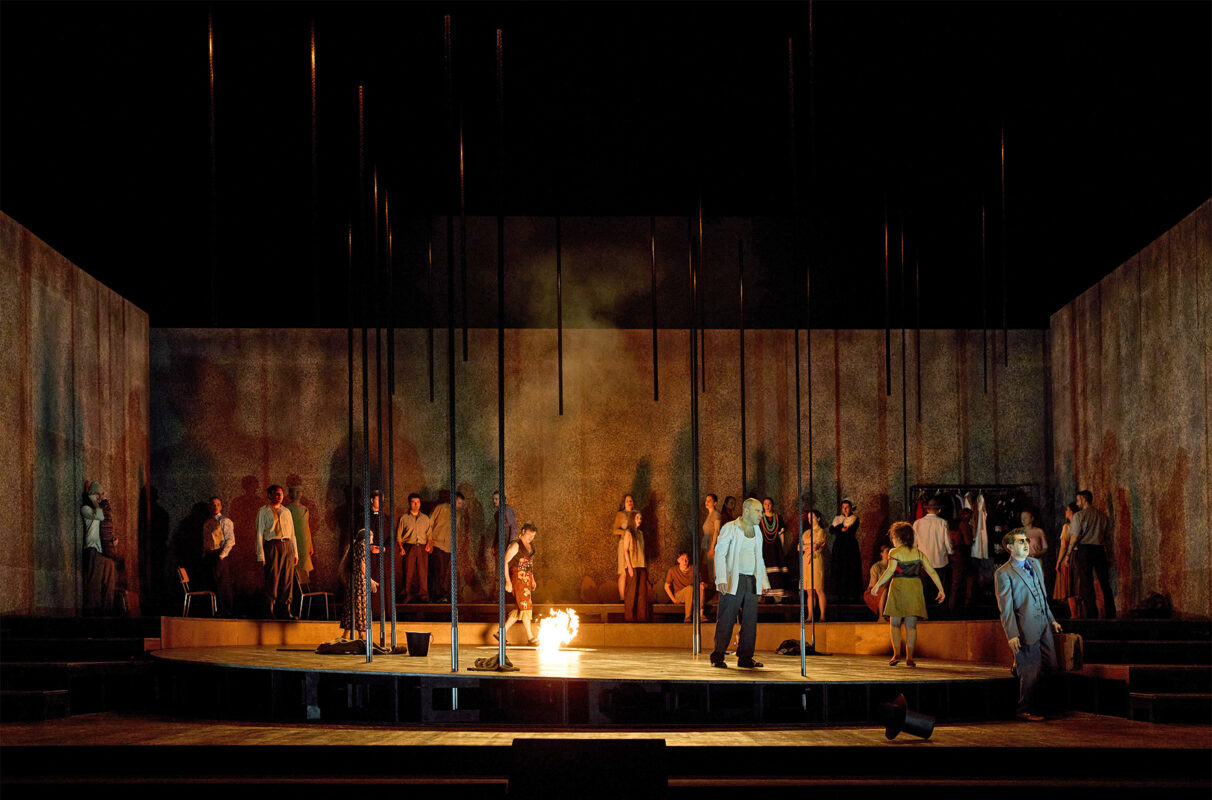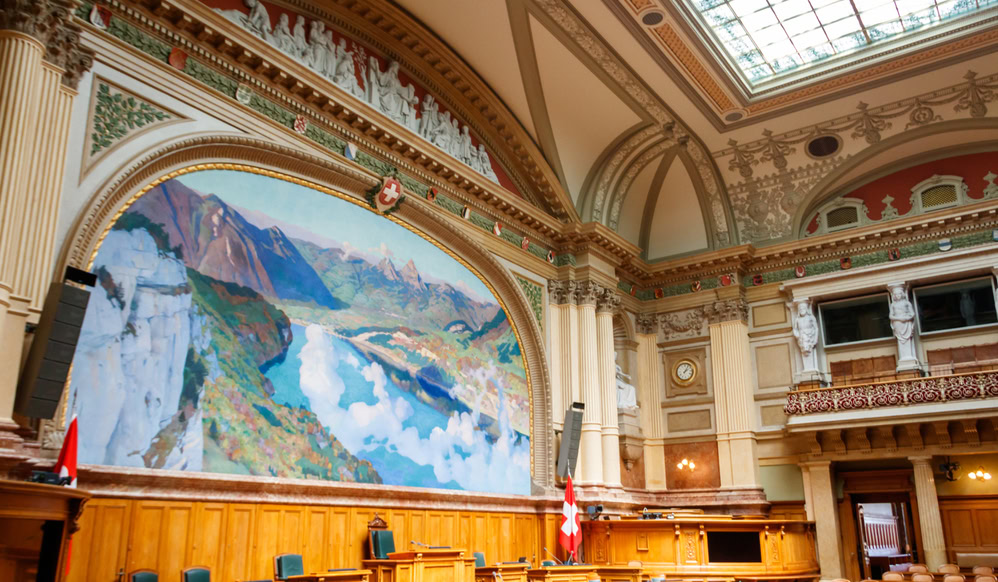Suggestive pull
Othmar Schoeck's opera "Das Schloss Dürande" was performed in concert for the first time in the Micieli/Venzago version at the Stadttheater Bern on May 31 and June 2, 2018.

Sometimes a work's rather unusual genesis can obstruct access to it - especially when it is invoked as a justification for its existence. Othmar Schoeck's opera Dürande Castle based on a story by Joseph von Eichendorff had long been relegated to the "don't touch me" drawers of music history. It was premiered in Nazi Berlin during the Second World War and was commissioned by the Nazis. Moreover, its libretto was written by the now completely unknown Hermann Burte, a blood-and-soil poet of little subtlety; it is full of clumsy metaphors and rhymes of a rather crude nature.
In order not to lose the music completely, a team led by Thomas Gartmann, head of the research department at Bern University of the Arts, has ventured a partial re-texting. In the run-up to the first concert performance of this arrangement by the author Francesco Micieli and conductor Mario Venzago, the media was therefore primarily confronted with questions about the historical position of the work and its re-performability.
It is therefore understandable that there was no small amount of must-be-scepticism and many other objections at the Bern City Theater: What is the point of such a project at a time when right-wing nationalist movements in Europe are on the rise again? Isn't this an attempt to wash the wrong play clean of suspicions of National Socialist appropriation at the wrong time? Couldn't these resources just as well be invested, for example, in a first staged production of the socially far more topical Magic Ring by the Ticino composer Francesco Hoch? And can it succeed in giving relevance to an opera whose musical language seemed to have fallen out of time when it was written?
After just a few bars, however, such themes seem far away. The Bern Symphony Orchestra conducted by Venzago, the Konzert Theater Bern choir and a whole host of excellent soloists (in smaller roles also from the ranks of the choir) fill the stage space far into the background. The music and story create a suggestive pull that is hard to resist, even without the scenic realization.
Autonomous work of art?
Micieli has replaced lousy lines from the libretto with passages from Eichendorff's works on the one hand and defused unsingable bumps with word changes and other retouching on the other. It is precisely the mixture of Eichendorff quotations, which replace politically or aesthetically unacceptable passages from the original libretto, and Burte's original lines, which seem strangely unwieldy in this context, that make this Dürande Castle into an enigmatic, intertwined work that is contradictory in its deeper dramatic layers.
What's more, the retouching also gives the story's conflicts, which have been chewed over countless times in the romance, a charm of their own. On the individual level: The brother believes he must restore the family's honor and kills his sister and her socially superior lover - caught up in a misjudgment about the sincerity of the count's feelings that is reminiscent of motifs from Greek tragedies. And on the intertwined social level: the destruction of Dürande Castle becomes a 19th-century topos of the conflicts between revolutionary movements and aristocratic oligarchies - including the final suicide bombing.
The intention of the project may have been motivated by music history. The result, however, is something else: it is somewhat reminiscent of postmodern methods of intertextuality, which have once again somewhat slipped away from topicality. The Eichendorff poem, for example, is interwoven into the new libretto In a cool bottom. In Germany when Hitler seized power, the Comedian Harmonists, banned from performing because of their "non-Aryan" members, made it extremely popular. Thus, external associations constantly seep into the new version.
The revised Dürande Castle can probably only be given its due if it is detached from the circumstances of its creation and reworking and perceived as an autonomous work of art. Ironically, the fact that the attempt at rehabilitation refers so intensively to the history of its creation could lead to it failing twice due to a misunderstanding: firstly, at the time of its premiere in an attempt to avoid appropriation; secondly, with regard to the new version, in an attempt to present it as a liberation from historical flaws. It will be interesting to see how the director Ansgar Haag will approach a planned staged version - it is to be realized at the Staatstheater Meiningen in 2019. Will the Dürande Castle will a corset of conventional music theater be laced there, thus emphasizing the moral-didactic impetus of the project, or will the breaks in the visual and theatrical language continue?
Caption
Mario Venzago rehearses with the Bern Symphony Orchestra, the Konzert Theater Bern choir and the soloists (standing Uwe Stickert and Sophie Gordeladze) at the Stadttheater Bern.
Photo: Konzert Theater Bern








